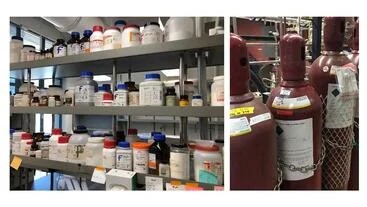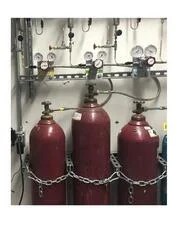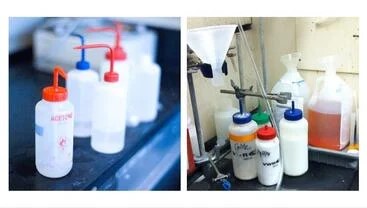Safety and Loss Prevention
Storage Vs. In-Use
Storage of hazardous materials is defined and used in multiple ways in the Fire Code. Chemicals that are actively being used (In Use) pose a greater hazard than chemicals with caps/lids on (Storage) due to a greater potential for spills or exposure. Therefore, the MAQs are more stringent for chemicals In Use compared to those in Storage.
Definitions:
- Storage, Hazardous Materials. The keeping, retention or leaving of hazardous materials in closed containers, tanks, cylinders, or similar vessels; or vessels supplying operations through closed connections to the vessel.

- Closed container. A container sealed by means of a lid or other device such that liquid, vapor or dusts will not escape from it under ordinary conditions of use or handling.
- Use (Material). Placing a material into action, including solids, liquids and gases.
- Closed system. The use of a solid or liquid hazardous material involving a closed vessel or system that remains closed during normal operations where vapors emitted by the product are not liberated outside of the vessel or system and the product is not exposed to the atmosphere during normal operations; and all uses of compressed gases. Examples of closed systems for solids and liquids include product conveyed through a piping system into a closed vessel, system or piece of equipment.

- Open system. The use of a solid or liquid hazardous material involving a vessel or system that is continuously open to the atmosphere during normal operations and where vapors are liberated, or the product is exposed to the atmosphere during normal operations. Examples of open systems for solids and liquids include dispensing from or into open beakers or containers, dip tank and plating tank operations.

For hazardous materials, there is a notable difference in MAQs for chemicals in storage vs. in use.
